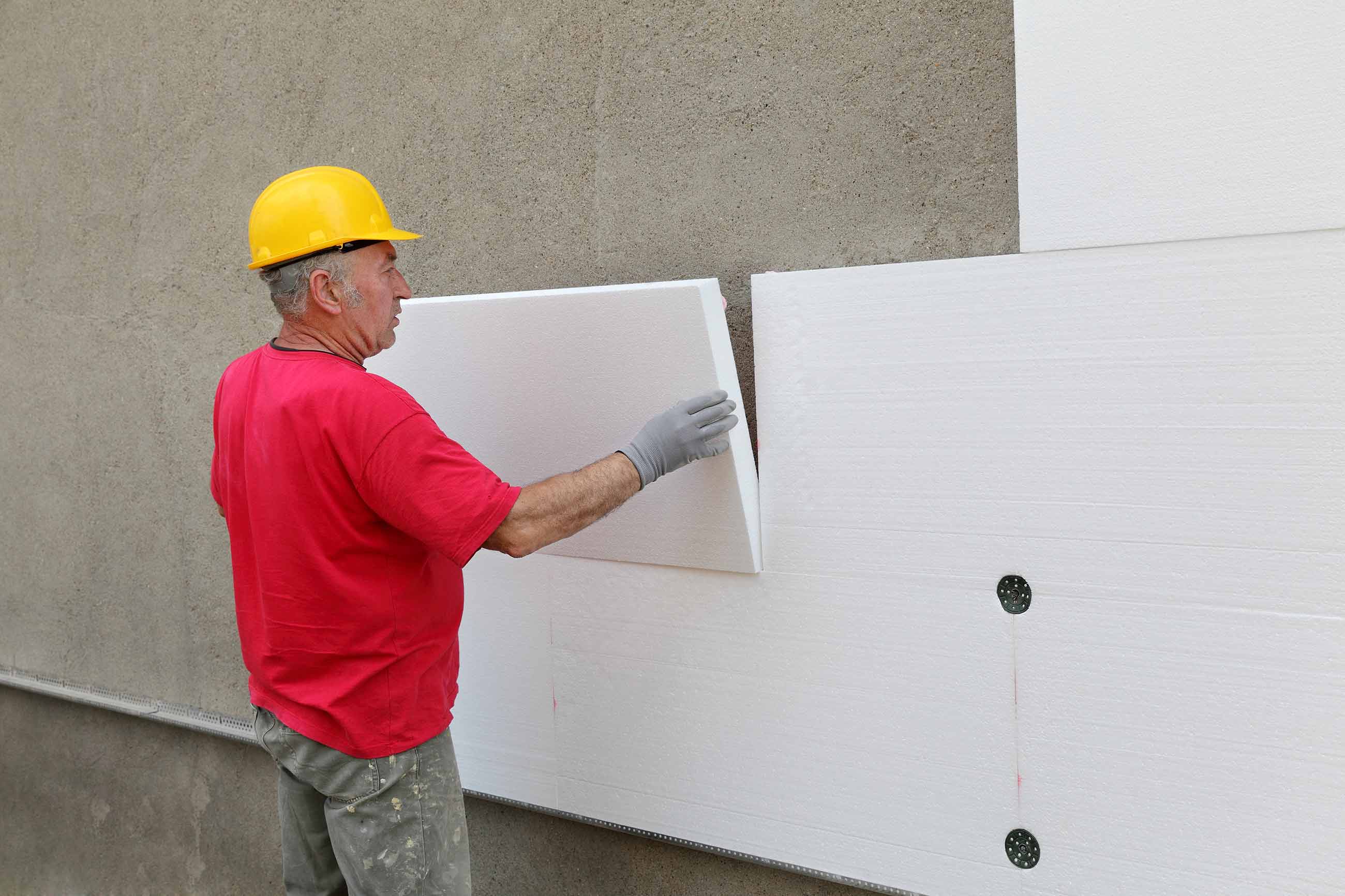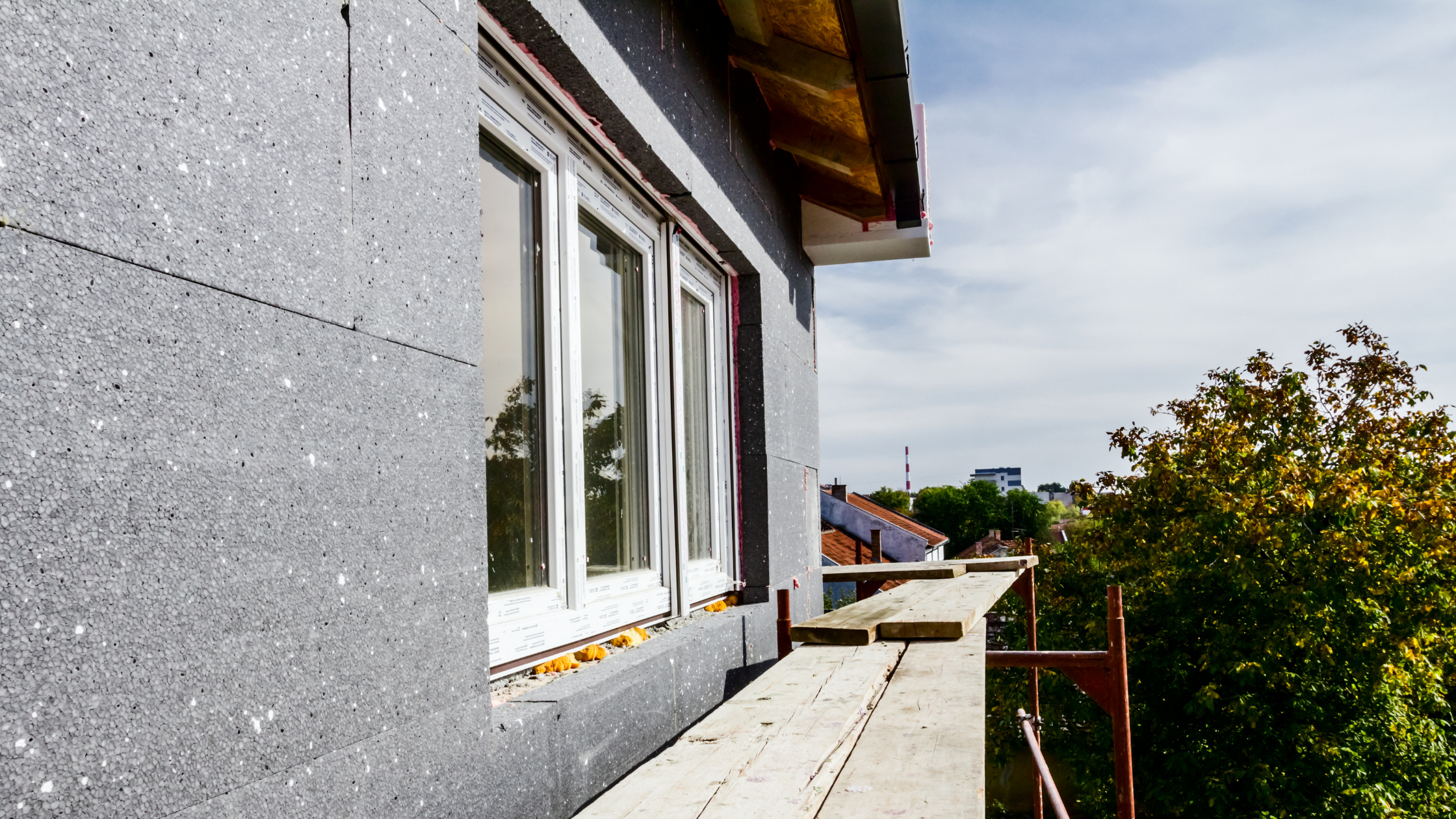Façade insulation
Façade insulation is one of the most important measures for energy-oriented refurbishment. Together with the replacement of old windows or window refurbishment and roof insulation, it is the energy-oriented refurbishment of façades that enables the most energy to be saved: up to 40% of heat energy can be lost through the outer walls in an uninsulated old building. It is therefore essential with older houses to insulate the façade. Façade renewal with additional thermal insulation reduces the heat loss by up to 75%!
Energy-oriented refurbishment of façades
The façade should always be refurbished in an energy-oriented manner if the outer shell needs renewing in any case. However, even if this is not the case it is still worth insulating the façade in accordance with modern standards – especially if according to GEAK the building is rated as belonging to energy class E or worse. An insulating course of 15 to 25 cm is required for this. This is normally attached directly to the masonry and the new façade in turn mounted directly on this. With an energy-oriented façade refurbishment it is possible to retain the existing architecture of a house – or alternatively to change it in a clearly visible manner entirely according to your wishes.
When refurbishing the façade in an energy-oriented manner, you can choose from two façade types – compact and rear-ventilated façades. Both have their benefits and drawbacks:
Compact façade
The compact façade – also known as plastered external insulation – is the most widespread type in Switzerland. Here the façade insulation is attached directly to the masonry in the form of blanket insulators. The plaster is applied to this thermal insulation. The façade plaster provides protection against the weather and mechanical stress and substantially shapes the appearance of a house: it is available smooth and fine, with and without patterns, and all conceivable colour variations (see Painters) are also possible.
As the façade of an uninsulated old building generally consists of plaster applied directly to the masonry, the compact façade is the best way of preserving the architecture. Compact façades are less expensive than rear-ventilated façades but normally need more maintenance and are less resilient mechanically.
Rear-ventilated façade
A rear-ventilated façade significantly alters the architecture of a house. This type of façade consists of the façade insulation (insulating panels) on which a supporting structure is mounted. The supporting structure holds the cladding, which is made of materials such as wood, fibre cement, stone, ceramic or metal.
The cladding has no contact with the façade insulation: the supporting structure maintains a gap between the insulating material and cladding. Air circulates through this rear ventilation space that continuously carries moisture away from the masonry and the house itself. Rear-ventilated façades are more expensive than compact façades but generally have a longer lifespan. They are also more robust and carry moisture away from the masonry particularly efficiently.
Façade insulation: the materials
Façade insulation consists of a material that conducts heat very poorly. The reason for the poor thermal conductivity is the air trapped in the insulating material. The materials used for façade insulation are therefore generally fleece-like or foam materials that contain numerous little air pockets. House façades are most frequently insulated with mineral wool (rock or glass wool) or expanded polystyrene (EPS, Styrofoam).
Mineral wool offers the advantage that it is not flammable and is even flame-retardant. It keeps its shape well and is extremely durable. Expanded polystyrene in turn has the advantage that it is very light and easy to mount and stick. Energy-oriented façade refurbishment with this material is normally less expensive than with mineral wool; however, polystyrene is heat-sensitive and can shrink over time.
Funding for façade renewal
The Federal Government and cantons support energy-oriented façade refurbishment with the building programme and there are additional regional funding programmes that also include façade renewal. They generally offer a fixed amount per square metre of thermal insulation. GEAK experts will be able to tell you which funding is available where. And it’s important to remember that funding has to be applied for before the start of construction work.
Energetische Sanierung
Find local partners now without obligation for...
Do not hesitate and let us know
We are there for you. Feel free to contact us directly by E-Mail with your questions or concerns. We will try to reply immediately. We are available from: Monday to Friday 08:00 – 18:00









